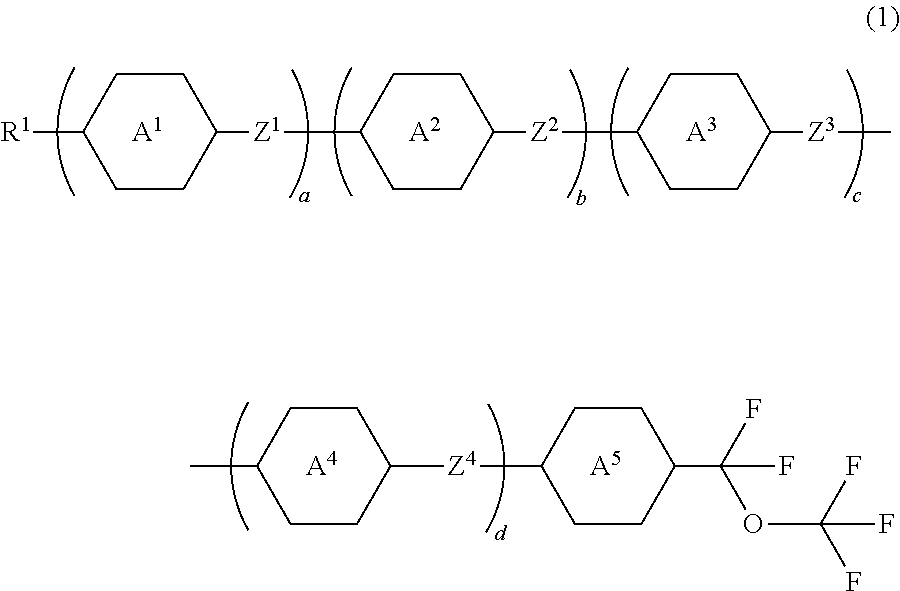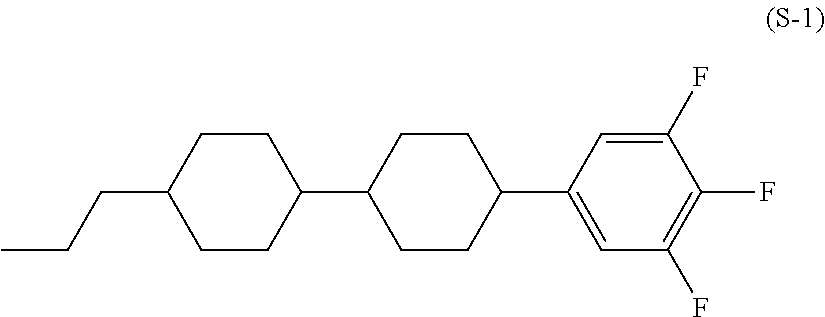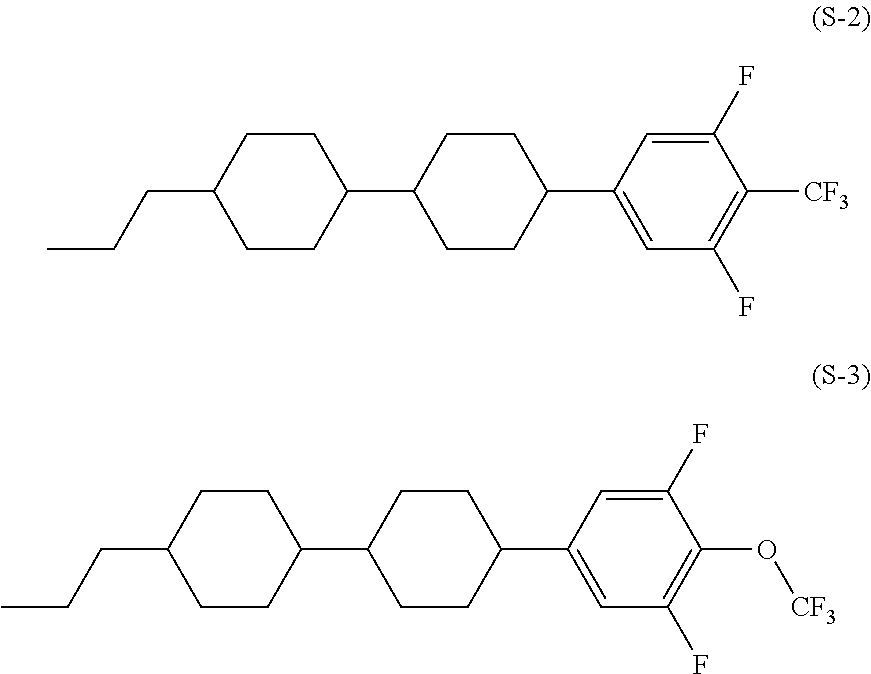Liquid crystal compound having cf2ocf3 at terminal, liquid crystal composition and liquid crystal display device
- Summary
- Abstract
- Description
- Claims
- Application Information
AI Technical Summary
Benefits of technology
Problems solved by technology
Method used
Image
Examples
example 1
Synthesis of Compound (No. 32)
[0141]
First Step:
[0142]Under a nitrogen atmosphere, compound (e-1) (30.0 g) and THF (180 mL) were put in a reaction vessel, and the resultant mixture was cooled to −74° C. Thereto, n-butyllithium (1.6 M; n-hexane solution; 68.9 mL) was added dropwise in the temperature range of −74° C. to −70° C., and the resultant mixture was further stirred for 60 minutes. Subsequently, a THF (20.0 mL) solution of dibromodifluoromethane (28.9 g) was added dropwise thereto in the temperature range of −75° C. to −70° C., and the resultant mixture was stirred for 60 minutes, while returning the temperature to 25° C. The reaction mixture was poured into ice water and an aqueous layer was extracted with toluene. A combined organic layer was washed with brine and dried over anhydrous magnesium sulfate. The solution was concentrated under reduced pressure, and the residue was purified by silica gel chromatography (heptane), and thus compound (e-2) (27.9 g; 66.7%) was obtaine...
example 2
Synthesis of Compound (No. 219)
[0147]
[0148]Compound (No. 219) was obtained by preparing compound (e-4) using compound (e-3) in place of compound (e-1), and using compound (e-4) in place of compound (e-2) in Example 1. In addition, compound (e-3) can be easily prepared with referring to Examples of JP 2009-292730 A or the like.
[0149]1H-NMR (δ ppm; CDCl3): 7.55 (d, 2H), 7.49 (d, 2H), 7.45 (d, 2H), 7.41-7.35 (m, 4H), 7.00 (d, 2H), 2.64 (t, 2H), 1.69 (sex, 2H), 0.99 (t, 3H).
[0150]Physical properties of compound (No. 219) were as described below.
[0151]Transition temperature: C, 93.8 SA 115.8; N, 116.7 I. TNI=87.0° C.; η=127.0 mPa·s; Δn=0.184; Δ∈=42.57.
Synthesis of Compound (No. 36)
[0152]
[0153]Compound (No. 36) was obtained by preparing compound using compound (e-5) in place of compound (e-1), and using compound (e-6) in place of compound (e-2) in Example 1. In addition, compound (e-5) can be prepared by the method described in JP 06-298685 A or the like.
[0154]1H-NMR (δ ppm; CDCl3): 7.49 ...
example 4
Synthesis of Compound (No. 67)
[0157]
[0158]Compound (No. 67) was obtained by preparing compound (e-8) using compound (e-7) in place of compound (e-1), and using compound (e-8) in place of compound (e-2) in Example 1. In addition, compound (e-7) can be prepared by the method described in JP 2003-176265 A or the like.
[0159]1H-NMR (δ ppm; CDCl3): 6.82 (d, 2H), 2.02 (d, 3H), 1.86 (d, 2H) and 1.75 (dd, 4H), 1.31-0.80 (m, 15H), 0.88 (t, 3H).
[0160]Physical properties of compound (No. 67) were as described below.
[0161]Transition temperature: C, 38.0; N, 88.4 I. TNI=72.4° C.; η=45.5 mPa·s; Δn=0.077; Δ∈=17.9; compatibility at a low temperature: 15 wt %, holding the liquid crystal phase at −20° C. for 30 days.
PUM
| Property | Measurement | Unit |
|---|---|---|
| Temperature | aaaaa | aaaaa |
| Composition | aaaaa | aaaaa |
| Dielectric anisotropy | aaaaa | aaaaa |
Abstract
Description
Claims
Application Information
 Login to View More
Login to View More - R&D
- Intellectual Property
- Life Sciences
- Materials
- Tech Scout
- Unparalleled Data Quality
- Higher Quality Content
- 60% Fewer Hallucinations
Browse by: Latest US Patents, China's latest patents, Technical Efficacy Thesaurus, Application Domain, Technology Topic, Popular Technical Reports.
© 2025 PatSnap. All rights reserved.Legal|Privacy policy|Modern Slavery Act Transparency Statement|Sitemap|About US| Contact US: help@patsnap.com



